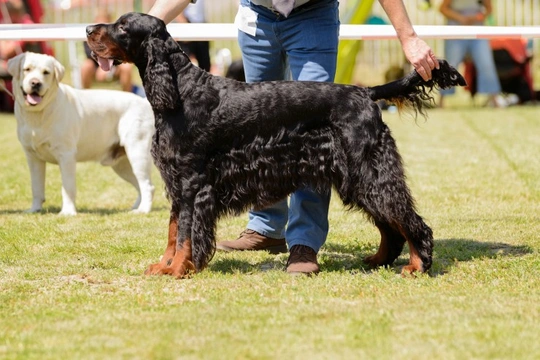
Six etiquette tips for dog show spectators
Whether you are involved in showing your own dog or not, if you wish to get started showing or simply love dogs, all dog owners should take in a dog show at least once in their lives, if only for the experience of it!
Lots of dog lovers enjoy watching shows even if they are not involved in showing themselves, and for people who want to start showing or are trying to buy a puppy that they can show, spending lots of time spectating at shows and seeing how the veterans do it is valuable experience.
You can learn a lot about showing and dogs in general from watching, meeting and chatting to owners, handlers and breeders-and the vast majority of people showing and handling dogs at dog shows will be only too happy to stop and chat about their dogs, and potentially give you invaluable advice, tips and insights too. However, when it comes to dog shows and making sure you don’t get in the way or cause problems, it is important to follow some universal etiquette when spectating, chatting and looking around.
In this article we will share six top etiquette tips for dog show spectators-whether you are viewing your first show, or simply taking a break from being in the ring yourself!
Don’t take your own dog if you want to get close to the ring
Many dog shows will only permit competing dogs to attend the show, and even if your dog is taking part in another class or has a legitimate reason to attend, it might be best to leave them with someone else or in their pen if you want to get close to the ring to watch some classes.
Even at shows where other dogs are welcome, think carefully about ways in which you might be restricted if you take your own dog-if you want to get them experience of the show environment, this is the right place, but if you want to network and spectate, your dog may be better left at home.
Always ask before petting, touching or giving a treat
Good canine etiquette dictates that you should never give someone else’s dog a treat without asking them, and many owners of show dogs will not want their dogs given treats by someone else, so keep them out of sight until you have asked.
Additionally, always ask before stroking or petting someone else’s dog-again, this is simple good manners as well as a safety precaution, and given the time and effort that many handlers make getting their dogs ready for the ring, the last thing they may want is someone touching their dog!
Leave younger children at home
Dog shows can be fun, educational and entertaining for children, but very young children may be better left at home. If your child is of an age where they are into everything, full of beans and may start crying or shouting for no reason, wait until they are a little older to take them along.
For older children, make sure you set some ground rules for them before you get to the show, so that they will have a positive experience, stay safe and not make any inadvertent mistakes.
Pick your moment when chatting to competitors
Most competitors will be only too happy to chat to you, talk about their dogs and give tips, advice and help to newcomers, but it is really important to pick the right moment when the competitors will be happy and relaxed!
Before the classes start, going round to say hi to dogs and owners is fine, but they will be very busy, so unless they are clearly willing to talk, don’t bother them. After classes have finished, allow competitors time to tend to their dogs and chat to their group, and then you will usually find that they will be amenable to a friendly approach, particularly if you saw their dog in the ring and open with a compliment!
Don’t use lots of flash photography
Many formal dog shows have rules surrounding filming and photography of the rings, and it is important to find out what these are ahead of time. Some venues will not permit any film or photography other than by their authorised reporters, while others may specify that images you take yourself cannot be used commercially.
Additionally, some shows may have restrictions on flash photography when competitors are in the ring-but even if they don’t, use your flash sparingly and ensure that it will not disturb the competitors or handlers. The best time to take pictures is when the winners have been picked and lined up, which is when photographic opportunities are usually welcomed.
Consider other spectators
Finally, think about other spectators when you’re watching-try not to block other people’s view, don’t sit in reserved seats, and if your dog or child will not settle and are making a fuss, move away.



